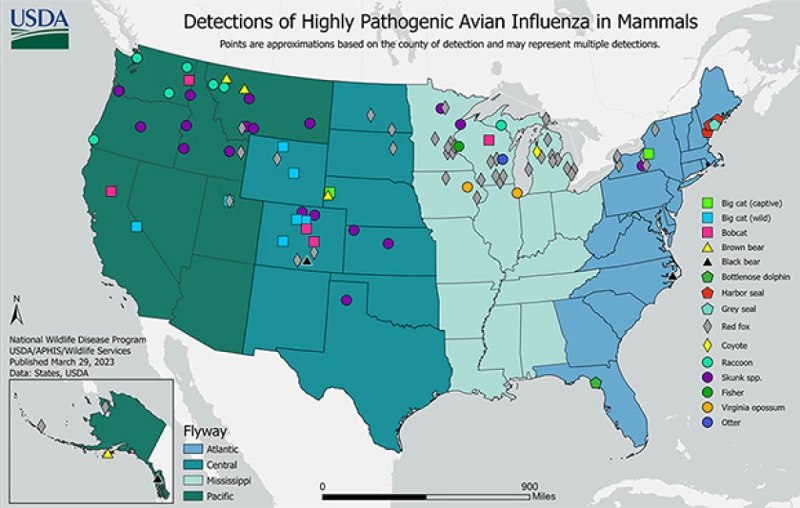
Mammalian deaths from bird flu are rare, but cats that spend time outdoors are especially vulnerable because they hunt and eat wild birds. (Julia Kleinschmit)
The bird flu wave that’s left around 60 million chickens and turkeys dead nationwide can also infect and kill pets like cats and dogs, along with other mammals.
Six cats have died in Nebraska, Wyoming and Oregon and at least one dog in Canada. The U.S. Department of Agriculture reports 170 mammals have picked up the disease during the latest outbreak, mostly wild foxes and skunks.
Cases are extremely rare but can be fatal.
“I think maybe we were waiting for this moment to happen,” said Nichola Hill, an ecologist at the University of Massachusetts Boston. “There have been documented cases in domestic cats and dogs now that have been linked to predation on dead birds, as tends to be the habit of dogs and cats. They’re predators too.”
Hill said keeping pets away from wildlife is the best way to protect them.
“This is a real call to action that we’re seeing this so close to home,” she said. “If you’re walking your dog, keep them on a leash. I have an indoor cat – I love cats, but I also love birds, and so I just keep them in different spaces.”

Sarah Sillman studies animal diseases and examined the three infected cats in Nebraska at the state’s veterinary diagnostic center.
The cats lived on rural farm acreages and likely ate birds infected with the disease, quickly becoming lethargic and developing breathing problems and gunky eyes.
The owners and veterinarians were worried they’d been exposed to a toxin like rat poison, until biopsies showed the presence of avian influenza.
Sillman said the disease also causes neurological damage that made it difficult for the cats to move as they experienced tremors, seizures and trouble walking.
“It’s a pretty significant disease for the cats that are affected. All the cases that I’ve encountered have been fatal,” she said. “But there’s millions of cats in the United States, and we only have a handful of confirmed cases. It’s very rare.”
It’s even rarer for the disease to pass to humans, according to poultry veterinarian David Swayne. Since 1997, Swayne said there have been 874 reported cases of humans contracting the disease. Symptoms are typically flu-like, but about 40% of those cases have been fatal.
“Something that helps me sleep at night is that this virus is watched very closely by public health agencies around the globe,” he said. “And to this point, the virus has not passed a threshold of being transmissible human to human. In 20 years of watching, it hasn’t happened.”
This story was produced in partnership with Harvest Public Media, a collaboration of public media newsrooms in the Midwest. It reports on food systems, agriculture and rural issues.













